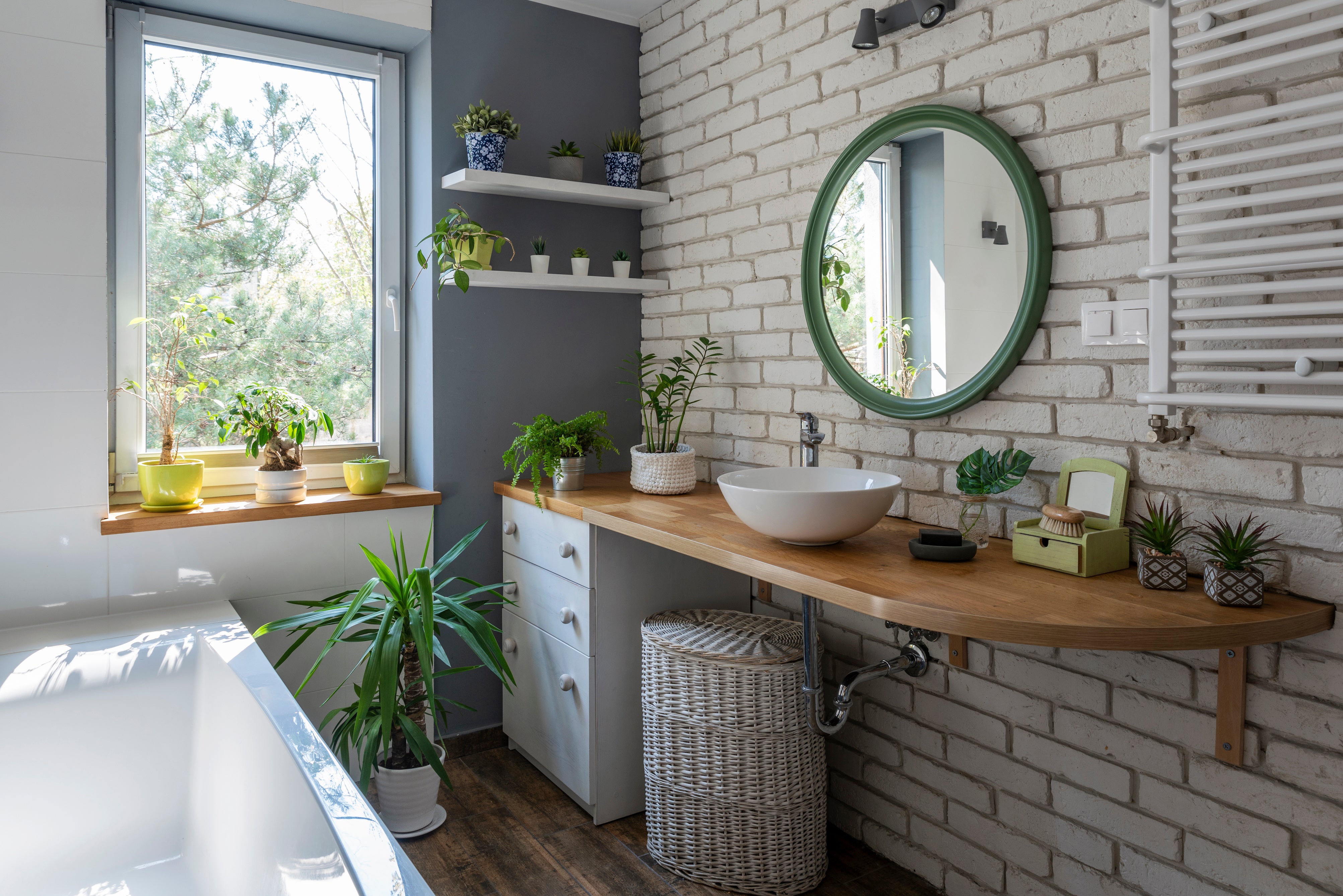Enhance your bathroom with the perfect low-light loving plants. Discover our top picks, complete with care tips and benefits, to transform your bathroom into a serene green haven.
Understanding Low-Light Conditions in Bathrooms
Low-light conditions in bathrooms are generally characterized by limited or no direct sunlight, often found in windowless spaces or rooms facing north. While many plants require bright, indirect light, certain species adapt well to less sunny environments, making them ideal for these spaces. Understanding the spectrum of low light—from low to moderate—helps in selecting plants that not only survive but thrive.
The Top 5 Houseplants for Your Bathroom
- Snake Plant (Sansevieria)
- This hardy plant is known for its upright, sword-like leaves. It excels in low-light conditions and helps filter indoor air, removing toxins such as formaldehyde and benzene.
- Pothos (Epipremnum aureum)
- Pothos, with its heart-shaped leaves and trailing vines, is not only aesthetically pleasing but also effective at purifying the air. It's incredibly forgiving and grows well in low-light environments.
- ZZ Plant (Zamioculcas zamiifolia)
- The ZZ Plant is celebrated for its ability to withstand neglect, particularly in terms of light and water. Its waxy, lush leaves reflect its resilience and capability to grow in dimly lit bathrooms.
- Peace Lily (Spathiphyllum)
- Known for its striking white blooms, the Peace Lily thrives in low-light and humid conditions. It's also noted for improving air quality by filtering out toxins.
- Philodendron
- Philodendrons come in many varieties, all of which tolerate low light. Their climbing and trailing varieties are perfect for adding greenery to shelves and high spots in the bathroom.
Benefits of Having Plants in Your Bathroom
Integrating plants into your bathroom decor not only enhances the aesthetic value but also contributes to a healthier environment. Plants in the bathroom help in purifying the air, reducing levels of stress, and increasing feelings of well-being and calm. They also help in maintaining higher humidity levels, which is beneficial for both human skin and plant health.
Expert Care Tips for Thriving Bathroom Houseplants
Caring for houseplants in bathroom environments poses unique challenges due to variations in light, temperature, and humidity. Below are expert tips designed to help your bathroom plants not only survive but flourish.
Monitoring Soil Moisture
Overwatering is a common mistake, especially in humid bathrooms. Use your finger to check the soil's moisture level; if the top inch is dry, it's time to water. Consider using pots with drainage holes to prevent excess water from sitting at the roots, which can cause root rot.
Adjusting to Seasonal Light Changes
During winter months, light levels can drop significantly. If your bathroom has a window, clean it regularly to allow maximum light entry. In windowless bathrooms, supplemental lighting like grow lights can be beneficial to mimic natural sunlight conditions.
Ensuring Proper Humidity Levels
Most bathroom plants benefit from high humidity, but too much can be detrimental, promoting mold growth. Ensure good air circulation by using an exhaust fan or occasionally opening the door, especially after hot showers, to balance the humidity levels.
Choosing the Right Fertilizer
Plants in low-light conditions require less fertilizer. Opt for a balanced, water-soluble fertilizer and use it at half strength every 4 to 6 weeks during the growing season. Avoid fertilizing in the winter when plant growth naturally slows down.
Cleaning Plant Leaves
Dust can accumulate on leaves, particularly in areas like bathrooms. Clean the leaves with a damp cloth every few weeks to unblock pores, allowing the plant to breathe better and absorb more light. This not only keeps the plants healthy but also enhances their appearance.
FAQs About Bathroom Houseplants
- What are the best plants for very low light conditions?
- For extremely low-light conditions, consider the ZZ Plant, Snake Plant, and Peace Lily. These plants are particularly resilient in low-light environments and can thrive with minimal natural light.
- How often should I water plants in a humid bathroom?
- Watering frequency should be reduced in humid bathrooms because the moisture in the air helps keep the soil damp for longer. Always check the soil moisture before watering—about every 1-2 weeks is usually sufficient, but this can vary based on the plant and the specific conditions of your bathroom.
- What types of plants are most suited for smaller bathrooms?
- Compact plants such as Pothos, Spider Plant, and small varieties of Philodendron are ideal for smaller bathrooms. These can be placed on shelves or hung to conserve space while still enhancing the environment with greenery.
- Can plants help improve air quality in my bathroom?
- Yes, many bathroom-suitable plants like the Peace Lily and Snake Plant are known for their air-purifying abilities. They can absorb common airborne toxins and help improve overall air quality in your bathroom.
- What should I consider when placing plants in a bathroom without windows?
- For bathrooms without windows, choose plants that thrive in low to no natural light. Additionally, consider artificial plant lights if necessary. Ensure that your plants are also suited to handle the high humidity typically found in bathrooms.
For more detailed plant care guides or to shop our collection of premium houseplant, visit Plant In The Box. Find the perfect plants to enhance your home and improve your indoor air quality today.






